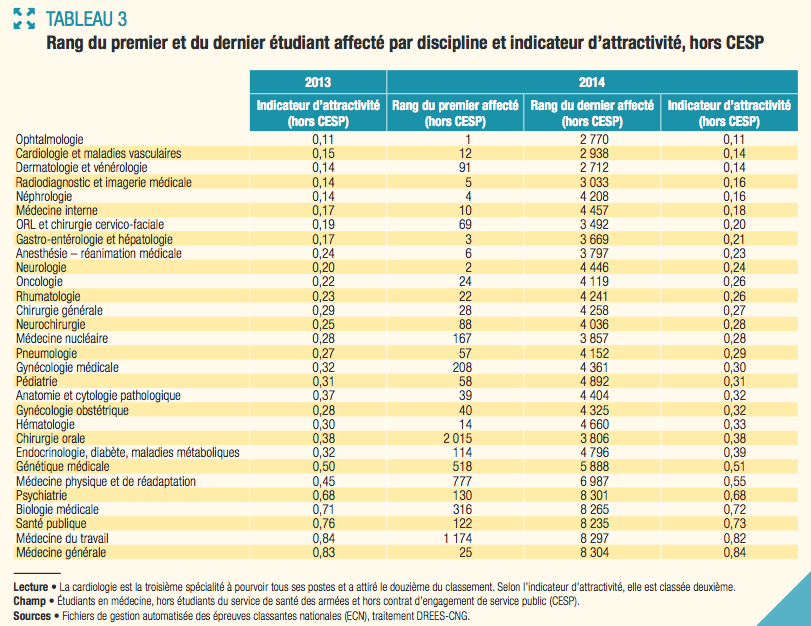Among the 30 medical and surgical specialties offered, future doctors favor ophthalmology. This is closely followed by cardiology and dermatology.

For several years now, ophthalmology has been at the top of the specialties most valued by medical interns. A confirmed trend for 2014, according to the Dress report (Directorate of research, studies, evaluation and statistics) published on Monday.
At the end of the national ranking tests in 2014, ophthalmology is the second specialty to fill all its positions, and is the most popular according to the attractiveness indicator. This includes both the wishes expressed by aspiring doctors, their classification and the number of positions offered. The lower the indicator, the more attractive the specialty (see table below).

Source: Marion Bachelet, 2015, “7,860 medical students assigned to the end of national ranking exams in 2014”, Studies and Results, n ° 937, Drees.
Preference for the liberal
For 2014, 8,190 intern positions were opened, and 7,860 students were assigned. According to the attractiveness indicator, it is the medical specialties that fill up with young interns the fastest. “The most popular are medical specialties whose dominant mode of practice is, for most of them, liberal”, notes Marion Bachelet, author of this work.
This is particularly the case for cardiology and dermatology – which share second place among the most attractive disciplines – or even radiology. Future doctors are also attracted to specialties whose dominant mode of practice is salaried work, such as nephrology or internal medicine.
Moreover, if all these specialties are among the most profitable, the students do not seem to favor them because of this criterion. Geographical mobility, the sacrifices they require or even the difficulty also play a role.
General medicine less valued
At the other end of the ranking, general medicine seems shunned by students. However, in 3 years, the increase in the proportion of filled positions has gone from 84% to 94%. In addition, general medicine, with its very large contingent of posts – it represents almost half of the posts offered – continues to recruit at all levels of classification. Indeed, the first to have chosen this specialty was 25th and 5% of the first 1000 classified have chosen this path. Thus, to say that general medicine remains a specialty chosen by default seems wrong. However, making it more attractive by training students earlier would make it possible to fill all the positions in this discipline.
.

















